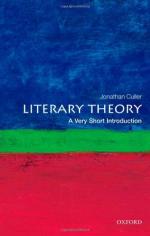
|
| Name: _________________________ | Period: ___________________ |
This test consists of 15 multiple choice questions and 5 short answer questions.
Multiple Choice Questions
1. Focault warned the masses to be wary of _________.
(a) Words as gospel.
(b) Starving artists.
(c) Poets as prophets.
(d) Reading as a hobby.
2. According to Chapter 4, what is a secret message placed within the broader scope of a text?
(a) Subliminal message.
(b) Hidden message.
(c) False message.
(d) Creative message.
3. According to Chapter 3, which author continues to stand the test of time?
(a) Shakespeare.
(b) Dan Brown.
(c) Ben Jonson.
(d) Marlowe.
4. Examining the time period prior to modern literature, in what fashion are these works of fiction analyzed for literary theory?
(a) They are not analyzed.
(b) Verbal analysis.
(c) Written analysis.
(d) Both written and verbal analysis.
5. In Chapter 3, from what form of culture is pop culture developed?
(a) Foreign.
(b) Underground.
(c) Combative.
(d) Mainstream.
6. What idea did Rousseau help to develop?
(a) Evolution.
(b) Individuality.
(c) The benefits of marriage.
(d) Financial awareness.
7. In terms of reading a literary work, Culler believes publication places what burden on a reader?
(a) Understanding it.
(b) Reading it.
(c) Buying it.
(d) Sharing it with friends.
8. What nationality was Rousseau?
(a) French.
(b) Russian.
(c) African.
(d) British.
9. In the West, most theorists believe language allows for _____________.
(a) Brotherhood.
(b) Intimacy.
(c) Communication.
(d) Thought expression.
10. According to Chapter 3, what creates tension within cultural studies?
(a) Writers are against it.
(b) Two different approaches.
(c) Ambiguous results.
(d) Educators prefer to read without coaching.
11. In English literature, many lead characters were written in order to inspire ______________.
(a) Nostalgia.
(b) Empathy.
(c) Sequels.
(d) Aspiration.
12. What form of criticism believes that the understanding of text is contingent upon reader knowledge and experience?
(a) Journal-revision.
(b) Writer-response.
(c) Reader-response.
(d) Reader-awareness.
13. According to Foucault's beliefs, what does society determine?
(a) Which ideas should be analyzed.
(b) Which ideas are interesting.
(c) All of these.
(d) Which ideas should invoke awe.
14. Literature, according to Culler, has the ability to do what for ideology?
(a) Destory it.
(b) Praise it.
(c) All of these.
(d) Elevate it.
15. What has literary theory tried to do for the classics?
(a) Insult them.
(b) Make them into movies.
(c) Censor them.
(d) Save them.
Short Answer Questions
1. What literary approach begins a work with no preconceived ideas in an effort to discover its meaning?
2. Why are cultural studies and literary theory not at odds with each other?
3. What part of "The History of Sexuality" bothered Michel Foucault?
4. What is the goal of cultural studies, according to Chapter 3?
5. What theory believes that language limits the ability to think?
|
This section contains 425 words (approx. 2 pages at 300 words per page) |

|




